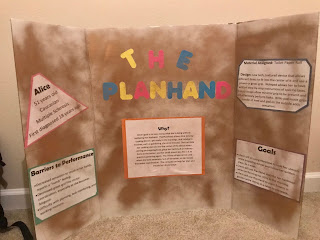My Beautiful Broken Brain - Neuro Note 2
Lotje Sodderland is a 34-year old woman who sustained a inter-cerebral hemorrhagic stroke as she
was home alone in her apartment. She
became overcome with confusion, disorientation, and could barely bring herself
to get off her bed. She found it in herself
to get out of her apartment and to a place downstairs where she collapsed in their
bathroom where people saw her and were able to call an ambulance. Lotje woke up feeling confused and didn’t remember
much but she had full motor ability and showed no physical signs of
stroke. In a short amount of time, her
family and those treating her noticed severe cognitive delays and deficiencies
in her language, logic, memory, reading, writing, and occasionally her sensory perception. She would begin a sentence and suddenly forget
what word to use, would recognize an object but couldn’t remember the word used
to describe it, couldn’t write her name or words, and couldn’t read. As someone who used to be involved in editing
and social media promotions and creative advertisement, this was a major scare for her
and hard for her to accept. After some time
at home and having outpatient therapy, she decided to reside at a neurological
facility where they would observe her daily, keep up with her progress, and
perform some experimental treatments on her.
During one of her experimental treatments she felt a weird shock or
tingle sensation in her head. Later that
day, she began convulsing and was rushed to the ER where her family was very
suspicious of the treatment she seemed to be persuaded into participating in by
the facility. Lotje ended her treatment in that particular facility and she didn't experience any more epileptic episodes. She enjoys meditation where she said she feels empowered in the silence. a year after her stroke, she feels strong and accepted her vulnerability. she focuses only on what matters which she said took her a long time to get used to a new brain. She says she will no longer be defined by her limitations but now by endless possibilities. That is so powerful! In the end, we find out that her stroke was caused by a pre-birth malformation of vessels in her brain which explains the hemorrhagic response. She documents her entire journey in up-close and personal videos on her iPhone.
As I watched this documentary, I felt so much emotion for her and what she was experiencing. When most of us hear of a stroke, the first thought is probably impaired motor function. Seeing such a different impairment like Lotje experienced that isn't visible in her appearance yet so apparent once she began speaking was surreal. Towards the end, Lotje goes to speak to a group of therapists and she describes the major challenge for therapists is to deal with the fact that you have to work with somebody who's being assessed and defined by their limitations because that's the only way to find out how to make them better. She explains how being defined by what you can no longer do becomes devastating. When asked by a therapist how she could have received better therapeutic treatment she said to focus more on what the patient might find along the way that they weren't expecting at all. I took that as her describing how she found new hobbies and adaptations, such as an assistive technology aid that read her emails to her, that she didn't have or do before. I really enjoyed this part of the documentary because not often do therapists get to hear from their clients what they wish they would have done and this was really the big take away for me. I thoroughly enjoyed the raw, emotional aspects of this video through her video diaries as well as her speaking to the therapists about how they can focus on things other than a diagnosis. I would strongly recommend this film to all of my classmates or any practitioners!!


Comments
Post a Comment